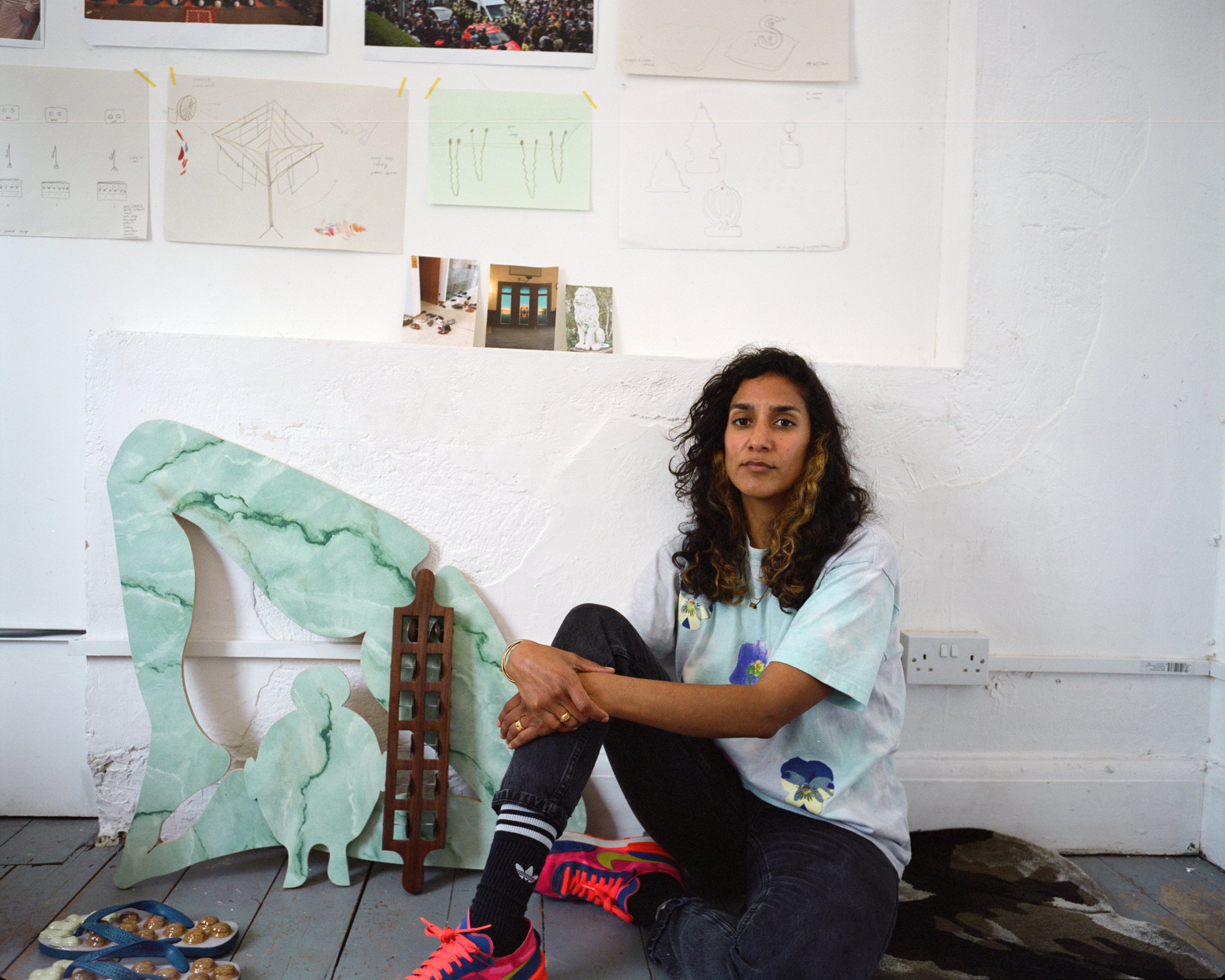
The Turner Prize nominee, artist Jasleen Kaur, is known for inventive and semi-autobiographical sculptures made from everyday objects. Born in Glasgow and living and working in London, Kaur’s works and installations use a range of media and ready-mades to explore cultural traditions and autobiography.
Kaur’s project “Alter Altar” at Tramway, Glasgow, earned them the prestigious nomination; the exhibition pulled together a constellation of family photos, an Axminster carpet, a classic Ford Escort covered in a giant doily, kinetic handbells, and bottles of Scotland’s unofficial national drink: Irn-Bru. The shortlist exhibition opens on September 25 at Tate Britain—back in London for the first time in six years. The winner will be announced at an award ceremony at the museum on December 3, 2024.
Jasleen Kaur:
Photo: Jasleen Kaur
I can say with some certainty that I was hearing devotional music in utero and from a very young age communal singing was part of my life. I was taught that music and devotion go hand in hand. It was my dad who taught me songs from the Sikh tradition, but the music I learned then, I now understand to be fundamentally changed through the impacts of colonization. I am interested in what was lost or is missing and how that shapes me today.
This is an image of a musical instrument cupboard in a Gurdwara in Glasgow, overflowing with tablas and harmoniums, presumably out of tune or in need of repair. They are probably for kids’ music classes that would take place after the Sunday service. These instruments, like the musical traditions, have altered through colonization too. They’ve become more polite in sound and in appearance. It’s hard to quantify that everything I inherit has been marred by imperialism.
Photo: Jasleen Kaur
This is the floor of the same Gurdwara. The building itself has four stories, probably converted from residential flats and was established as a worship space in 1981. There’s a particular charm and presence of the hand in buildings that used to be something else—you can see traces of attempts to transform it. The floor is a yellow, red, and white marbled pigmented concrete, mimicking the luxury of marble.
Photo: Jasleen Kaur
I haven’t visited this building for over a decade or more but have such strong memories and sensations of being in this space as a child. I am drawn to the fake, the faux, the veneer—and this building is full of them—it speaks to class, taste, and desire.
Photo: Jasleen Kaur
In this photo, my child, aged five, is taking a photo of a religious figure in my maternal grandmother’s house in Pollokshields, Glasgow. Recently I have been thinking about the significance of what filters into the home and which histories are aided through printed and commodified ephemera. The image itself is sun-bleached, which tells me about its age, and has creases from being previously rolled up before being framed. The signature reads “Sobha Singh,” a painter, famous for his Sikh artworks. They filled the walls of every Sikh family’s house I visited growing up. I’m always struck by the influence of Western European paintings on his style.
I’m interested in the iconography and symbolism in the homes and community spaces I grew up around and how they function as pedagogical tools.
Photo: Jasleen Kaur
This is an image of Christmas decorations for sale in a cash and carry. You see a candle bridge of fake flames and a string of fake icicles. Many of my family members work in shops and cash and carry’s and in turn, these were the worlds I grew up in. They are spaces full of material subterfuge, versions of versions, things are never quite what they are. Growing up around reams of fabricated stuff has shaped how I think through objects and materials.
In our series Source Material, artists share their creative journeys beyond the confines of the studio. From hunting down frescos in Florence to chasing storms in Cornwall, we explore the eclectic sources of inspiration that fuel artists’ imagination.